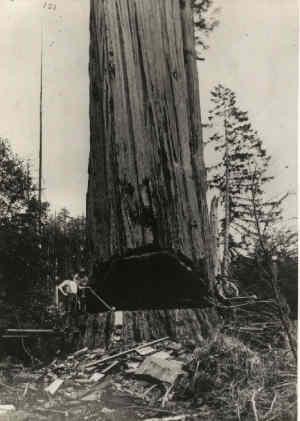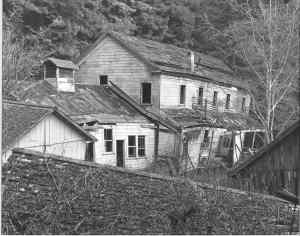The Falk Death March
There was a time when I could hike 10 miles like it was a stroll to the corner market. Those days are long gone, so yesterday’s 12-mile hike was more like a death march for the last few miles. It’s not that I’m in bad shape, so much as I’m just out of practice.
Noah Falk founded the logging town of Falk in 1884. At that time is was more than an hours traveling distance from Eureka, so the town was self sufficient. Up until The Great Depression of the 1930s it was a successful lumber town with railroads, a large mill, post office, and housing for about 400 residents. By the 1940s is was a ghost town.

I’m sure it was in an effort to protect themselves from law suits, but some time in the 1970s the Pacific Lumber Company, who now owned the land decided to raze what was left of the town, so they bulldozed and burned everything. Time had reduced that 1884 hour long commute in to a 15 minute car ride from downtown Eureka. Apparently lots of people liked to go out there and explore the ghost town of Falk and some where getting hurt.
The BLM now manages the area and there is a nice, paved trail to the area where the town of Falk once was. Most of Falk is gone, but there are a few things still left, if you’re willing to go off the beaten trail. That’s is we did yesterday.
This was my first trip to Falk, but the friends I went with had been many times. We saw some old Model T Fords rusting in the trees. There was an old cabin that was falling apart. There was one odd little house that was no more than 8 feet wide and lined with benches on the walls. We suspected it was a feeding station for the loggers. They would haul up a chuck wagon to feed the men in the little cabin, rather than have them make there way back to town.
There was remnants of the railroad here an there with a few old trestles. The coolest thing was the old train barn. They could pull two locomotives in to it and there were pits in the ground where workers could service the engines from underneath. The barn is just buried in the trees now. Any remnants of tracks or roads from the town to the barn have long since been reclaimed by the forest. It was really very cool and well worth the pain and blisters.
















10 comments:
wow. i love to think of places like that, and it's always a treat to see a forest whose trees and undergrowth are so different from the ones around here (east coast). thanks for taking us with you.
I'm really happy that The Petch House gave you a day off. I hope you came home & had a long soak in your boat of a bathtub.
Very Cool. I have read alot about
Falk but never visited till going
with you. Heraldo recommended your
blog. Nice job.
Thanks LL. It was fascinating to see the history, but it makes me wish more of Falk remained. With federal money pouring in to the area managed by the BLM, they could have made a nice attraction out of what was left.
that's what they r gonna do actually they plan to move the train barn and cookhouse across the river and spruce them up from what i've been told.
I think it is a terrible idea to move the train barn. They will ruin it when they do. What they should do is stabilize the structure and make it safe for people to walk through. They could build a small trail to it instead of moving it. The whole idea is really stupid in my opinion. The biggest sin when it comes to historic structures is to move them and take them out of context.
One of the engines that was housed in the barn resides at Fort Humboldt SHP. It still steams up from April trough summer on the third weekend of every month. I agree, moving the barn seems a misplaced ideal.
"One of the engines that was housed in the barn resides at Fort Humboldt SHP"
I didn't know that! I've seen that engine. Thanks.
Nice Photos. I am part of the team that is working on the redo of the barn. It was moved because it wasnt safe and difficult to get to. It was cost prohibitive to do anything other than was done and that was expensive as it was. If there was a way to save it in its original location. I agree moving a structure out of context isnt the best, however it was the best that could be done. The interpretation of the Headwaters isnt just about Falk.
Alan,
The barn was in rough shape, no question, but it really wasn't that far out of the way. Clearing a trail to it would not have been that much work.
I thought it had a very nice look to it the way it was. I stand by my assertion that it should have been left where it was and stabilized.
Post a Comment